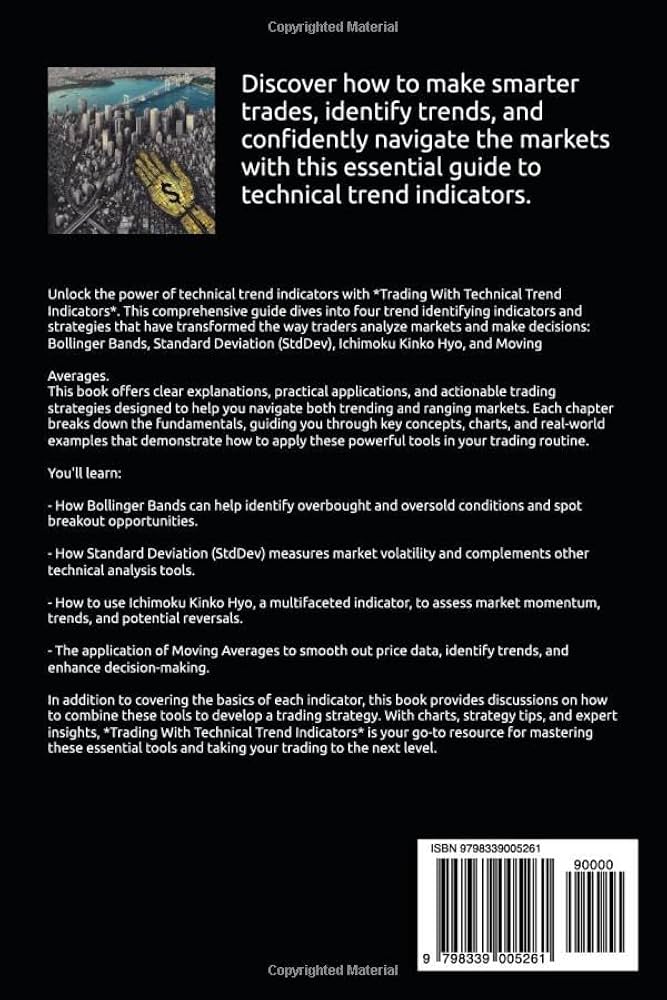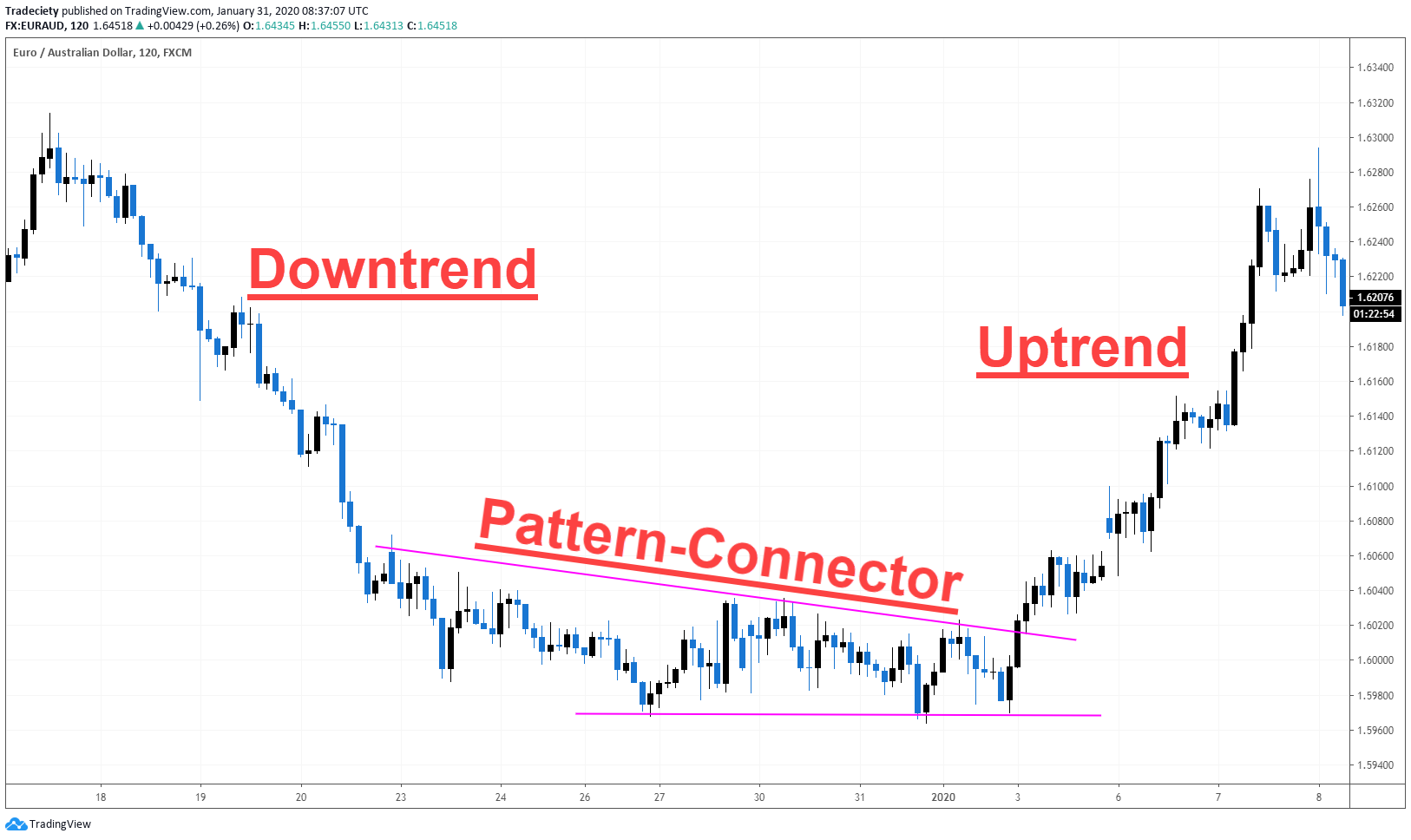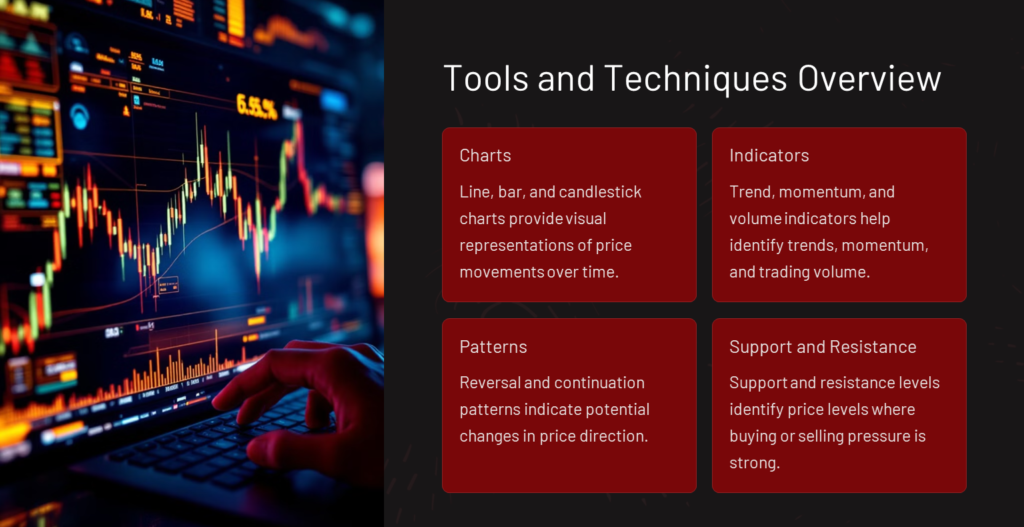Did you know that even the best traders can sometimes feel like they're trying to find their way out of a corn maze? Creating a successful reversal trading plan can feel just as tricky, but it’s essential for navigating the unpredictable market landscape. In this article, we’ll explore what a reversal trading plan is, why it’s vital, and how to identify reversal patterns effectively. We’ll break down the key components, including setting entry and exit points, utilizing indicators, and applying risk management techniques. Additionally, we’ll discuss the best timeframes for reversal strategies, common mistakes to avoid, and how to backtest your plan. With insights on market conditions and psychological factors, you’ll be equipped to adjust your strategy as needed. Finally, we’ll highlight tools and software to help you stay disciplined on your trading journey. Let DayTradingBusiness guide you through the intricacies of creating a robust reversal trading plan!
What is a Reversal Trading Plan?
A Reversal Trading Plan identifies potential market reversals to profit from price changes.
1. Market Analysis: Use technical indicators like RSI or MACD to spot overbought or oversold conditions.
2. Identify Key Levels: Look for support and resistance levels where reversals are likely to occur.
3. Entry Signals: Define clear entry points, such as candlestick patterns or breakouts at key levels.
4. Risk Management: Set stop-loss orders to protect your capital and define your risk-to-reward ratio.
5. Exit Strategy: Plan when to take profits, either at predetermined levels or based on trailing stops.
6. Review and Adjust: Regularly evaluate your trades to refine your strategy and improve performance.
Why is a Reversal Trading Plan Important?
A reversal trading plan is important because it helps traders identify potential market turnarounds. It provides a structured approach to enter and exit trades, minimizing emotional decision-making. This plan includes key components like entry signals, stop-loss levels, and profit targets, which enhance risk management and increase the chance of profitability. By following a reversal trading plan, traders can capitalize on price corrections, improving their overall trading strategy.
How Do You Identify Reversal Patterns in Trading?
To identify reversal patterns in trading, look for key chart formations like head and shoulders, double tops/bottoms, and bullish/bearish engulfing candles. Monitor volume changes, as higher volume on reversals often confirms the pattern. Use technical indicators such as RSI and MACD for divergence signals. Set clear entry and exit points, and incorporate stop-loss orders to manage risk. Analyze historical price action to understand the context of the pattern. This approach will help you create an effective reversal trading plan.
What Are the Key Components of a Reversal Trading Plan?
The key components of a reversal trading plan include:
1. Market Analysis: Identify potential reversal points using technical indicators like RSI, MACD, or candlestick patterns.
2. Entry Strategy: Define clear entry signals based on your analysis, such as support/resistance levels or trendline breaks.
3. Risk Management: Set stop-loss orders to limit losses and determine position sizes based on your risk tolerance.
4. Profit Targets: Establish exit points or profit-taking strategies, using a risk-reward ratio that aligns with your trading goals.
5. Trade Journal: Keep a record of trades to analyze performance and refine your strategy over time.
6. Review and Adjust: Regularly evaluate the effectiveness of your plan and make necessary adjustments based on market conditions.
How Can You Set Entry and Exit Points for Reversal Trades?
To set entry and exit points for reversal trades, follow these steps:
1. Identify Reversal Zones: Use support and resistance levels, trend lines, or Fibonacci retracements to find potential reversal points.
2. Use Candlestick Patterns: Look for reversal patterns like hammers or engulfing candles to confirm a potential reversal.
3. Set Entry Points: Enter the trade when the price breaks a key level or confirms a reversal pattern. For example, enter after a bullish engulfing pattern at support.
4. Determine Exit Points: Set profit targets based on previous highs/lows or use a risk-reward ratio of at least 1:2.
5. Implement Stop Losses: Place stop-loss orders just beyond the reversal point to limit losses if the trade goes against you.
6. Monitor Volume: Confirm the reversal with increased trading volume, as this indicates stronger momentum.
By combining these techniques, you can effectively set entry and exit points for reversal trades.
What Indicators Help in Developing a Reversal Trading Strategy?

Key indicators for developing a reversal trading strategy include:
1. Candlestick Patterns: Look for reversal patterns like hammers, shooting stars, or engulfing patterns.
2. Support and Resistance Levels: Identify key levels where price has previously reversed.
3. Relative Strength Index (RSI): Use RSI to spot overbought (above 70) or oversold (below 30) conditions.
4. Moving Averages: Watch for crossovers of short-term and long-term moving averages to signal potential reversals.
5. MACD (Moving Average Convergence Divergence): Look for divergence between MACD and price for reversal signals.
6. Fibonacci Retracement Levels: Use these levels to identify potential reversal zones.
7. Volume Analysis: Increased volume at reversal points can confirm the strength of a reversal.
Combine these indicators for a robust reversal trading plan.
How Do Risk Management Techniques Apply to Reversal Trading?
Risk management techniques in reversal trading involve setting clear stop-loss orders to limit losses, using position sizing to control exposure, and diversifying trades to spread risk. Incorporate trailing stops to protect gains as the trade moves in your favor. Monitor market conditions and adjust your plan based on volatility. Always assess risk-to-reward ratios before entering a trade, ensuring potential profits justify the risks involved.
What Timeframes Work Best for Reversal Trading Strategies?
For reversal trading strategies, the best timeframes are typically the 1-hour, 4-hour, and daily charts. Shorter timeframes like 15-minute or 30-minute can also work but may generate more noise. Focus on higher timeframes for stronger signals and better reliability. Use technical indicators like RSI or MACD to confirm reversals at these levels.
How Can You Backtest a Reversal Trading Plan?
To backtest a reversal trading plan, follow these steps:
1. Define Entry and Exit Criteria: Specify the conditions for entering and exiting trades based on reversal signals, such as candlestick patterns or indicators like RSI.
2. Select Historical Data: Gather price data for the assets you plan to trade. Ensure it's clean and covers a sufficient timeframe to capture various market conditions.
3. Simulate Trades: Manually or use software to simulate trades based on your criteria. Record each trade's entry price, exit price, and outcome.
4. Analyze Results: Calculate metrics like win rate, average profit/loss, and maximum drawdown. This helps assess the effectiveness of your plan.
5. Refine Your Plan: Adjust your entry and exit criteria based on the results, then retest to see if improvements lead to better outcomes.
6. Use a Trading Journal: Keep a detailed log of your trades, including your thought process, to learn from successes and mistakes.
This structured approach will help you validate your reversal trading plan before implementing it in live markets.
What Common Mistakes Should You Avoid in Reversal Trading?

Avoid these common mistakes in reversal trading:
1. Ignoring Trend Analysis: Always assess the prevailing trend before attempting a reversal. Trading against strong trends can lead to losses.
2. Lack of Risk Management: Set stop-loss orders to protect your capital. Failing to manage risk can wipe out your account.
3. Relying Solely on Indicators: Use a combination of price action and indicators. Overdependence on one can lead to false signals.
4. Entering Too Early: Wait for confirmation of a reversal before entering a trade. Premature entries increase the risk of false breakouts.
5. Neglecting Market Sentiment: Pay attention to news and market sentiment, as they can affect price movements significantly.
6. Failing to Adapt: Be flexible and adjust your strategy based on market conditions. Sticking rigidly to a plan can lead to missed opportunities.
7. Overtrading: Avoid taking too many trades in a short period. Focus on quality setups rather than quantity.
By steering clear of these pitfalls, you can enhance the effectiveness of your reversal trading plan.
What are effective steps to create a reversal trading plan for day trading?
To create a reversal trading plan, follow these steps:
1. **Identify Reversal Patterns**: Focus on candlestick patterns like hammers, shooting stars, or double tops/bottoms.
2. **Set Entry Points**: Determine specific price levels where you will enter trades based on identified patterns.
3. **Establish Exit Strategies**: Define profit targets and stop-loss levels to manage risk.
4. **Use Technical Indicators**: Incorporate indicators such as RSI or MACD to confirm potential reversals.
5. **Backtest Your Plan**: Test your strategy on historical data to assess its effectiveness before live trading.
6. **Maintain Discipline**: Stick to your plan and avoid emotional trading decisions.
This structured approach will help in executing effective reversal trades.
Learn more about: Understanding Day Trading Reversal Strategies
Learn about How to Create a Backtesting Plan for Day Trading
How Do Market Conditions Affect Reversal Trading Plans?
Market conditions significantly impact reversal trading plans. In strong trending markets, reversals are less likely to succeed, so traders should be cautious and look for stronger confirmation signals. In choppy or sideways markets, reversal opportunities may be more frequent, allowing traders to capitalize on price swings.
Key indicators like support and resistance levels, volume spikes, and candlestick patterns become crucial in identifying potential reversals. Adjust your entry and exit strategies based on volatility; tighter stop-losses may be needed in uncertain conditions. Always align your reversal plan with the current market sentiment for optimal results.
Learn about How Does Market Microstructure Affect Day Trading Strategies?
What Psychological Factors Should You Consider in Reversal Trading?
When creating a reversal trading plan, consider these psychological factors:
1. Fear and Greed: Understand how these emotions can drive decisions. Fear may cause you to exit too early, while greed can lead to holding positions longer than necessary.
2. Overconfidence: Be wary of overestimating your ability to predict market reversals. This can lead to excessive risk-taking.
3. Loss Aversion: Recognize that the pain of losing often outweighs the pleasure of winning. This can affect your exit strategy and risk management.
4. Confirmation Bias: Be mindful of seeking information that supports your existing beliefs about a reversal, which can cloud judgment.
5. Market Sentiment: Pay attention to overall market mood; it can significantly impact your reversal trading strategy.
Incorporating these factors into your plan can enhance decision-making and improve trading outcomes.
How Can You Adjust Your Reversal Trading Plan Over Time?
To adjust your reversal trading plan over time, regularly analyze your trade results and market conditions. Start by reviewing your entry and exit points—identify what worked and what didn’t. Adapt your indicators based on performance; for instance, if a particular signal isn’t yielding results, consider replacing it. Incorporate feedback from your trading journal to refine your strategy. Stay informed about market trends and adjust your risk management rules as needed. Finally, test any changes in a demo account before applying them in live trading.
What Tools or Software Can Help with Reversal Trading?

To create a reversal trading plan, consider these tools and software:
1. TradingView: Offers advanced charting tools and technical indicators to identify reversal patterns.
2. MetaTrader 4/5: Provides customizable indicators and automated trading options for spotting reversals.
3. ThinkorSwim: Features robust analysis tools and backtesting capabilities to refine your reversal strategies.
4. NinjaTrader: Ideal for real-time analysis and includes features for developing reversal trade setups.
5. StockCharts: Great for visualizing price movements and identifying potential reversal signals.
Use these tools to analyze market trends, set entry and exit points, and manage risk effectively in your reversal trading strategy.
How Do You Stay Disciplined While Following a Reversal Trading Plan?
To stay disciplined while following a reversal trading plan, establish clear entry and exit criteria based on technical indicators or chart patterns. Stick to your trading rules, avoiding emotional decisions. Use stop-loss orders to manage risk. Keep a trading journal to track your trades and analyze outcomes. Regularly review and adjust your plan based on performance, but avoid making impulsive changes. Lastly, maintain a consistent routine to reinforce your commitment to the plan.
Learn about How to Stay Disciplined While Day Trading Scalping
What Are the Differences Between Reversal and Continuation Trading Strategies?
Reversal trading strategies aim to capitalize on price trend changes, while continuation strategies focus on riding existing trends. In reversal trading, you look for signs that a trend is losing momentum, such as specific chart patterns or indicators like RSI. In contrast, continuation trading relies on confirming existing trends through momentum indicators or volume analysis.
To create a reversal trading plan, identify key reversal signals, set entry and exit points, and manage risk with stop-loss orders. For continuation, focus on trend analysis, setting profit targets based on trend strength, and ensuring your strategy aligns with market conditions.
Conclusion about How to Create a Reversal Trading Plan
In conclusion, a well-structured reversal trading plan is essential for navigating the complexities of the market. By understanding reversal patterns, setting precise entry and exit points, and incorporating robust risk management techniques, traders can enhance their decision-making process. Tools and software can further streamline this strategy, while discipline and adaptability are key to long-term success. For deeper insights and guidance on crafting your reversal trading strategy, rely on the expertise of DayTradingBusiness.
Learn about How to Create a Backtesting Plan for Day Trading
Sources:
- Combining momentum with reversal in commodity futures ...
- Another Look at Trading Costs and Short-Term Reversal Profits by ...
- Momentum and reversal strategies in Chinese commodity futures ...
- Volatility, Opportunity, and Reversal Strategies by Vinesh Jha :: SSRN
- Information percolation, momentum and reversal - ScienceDirect